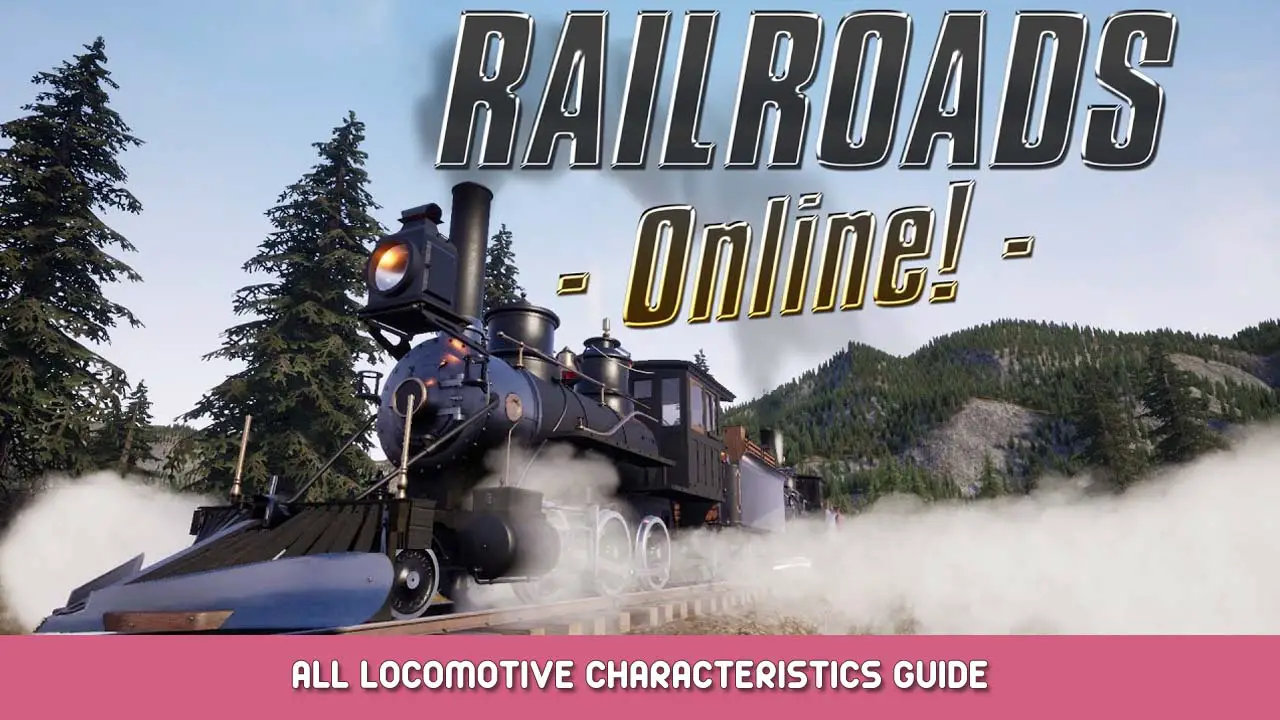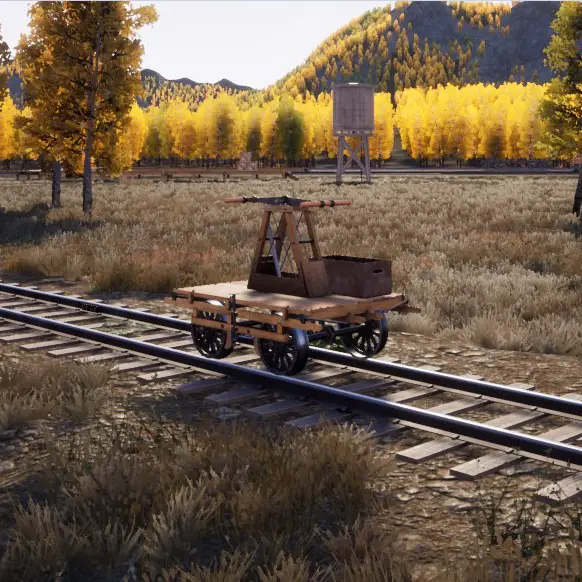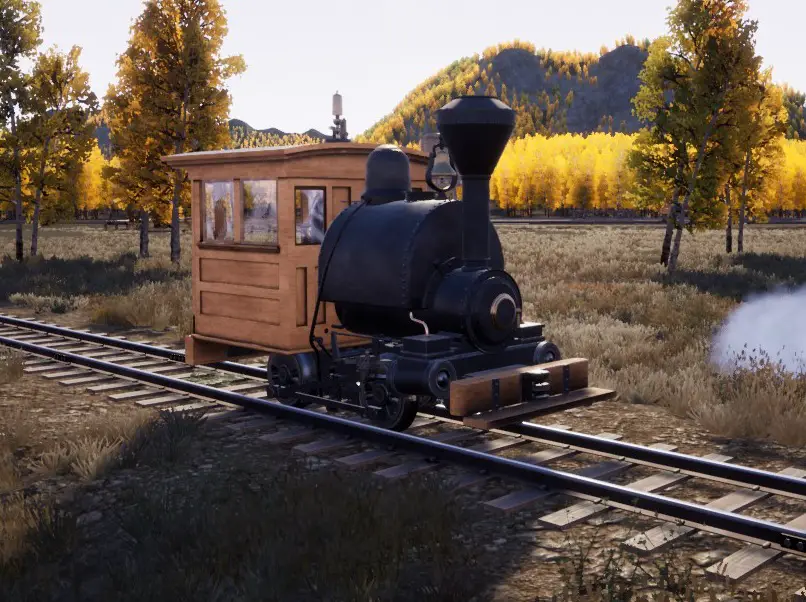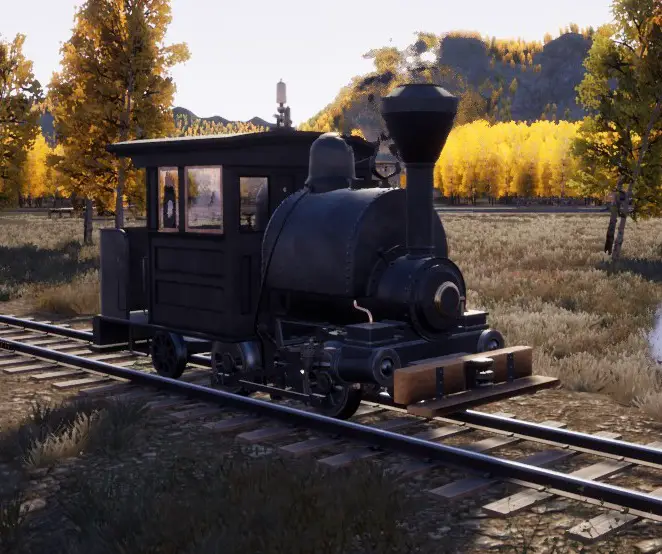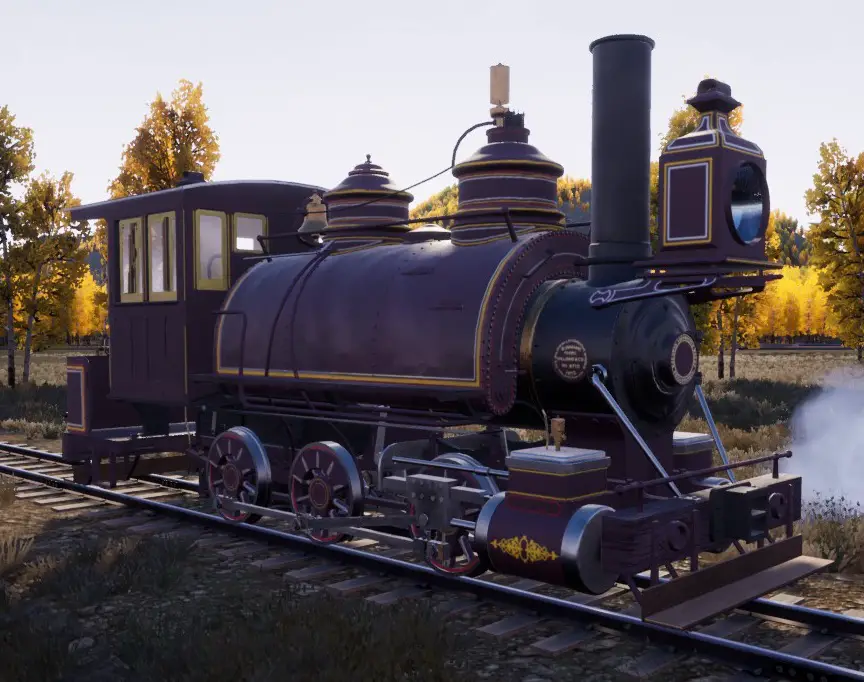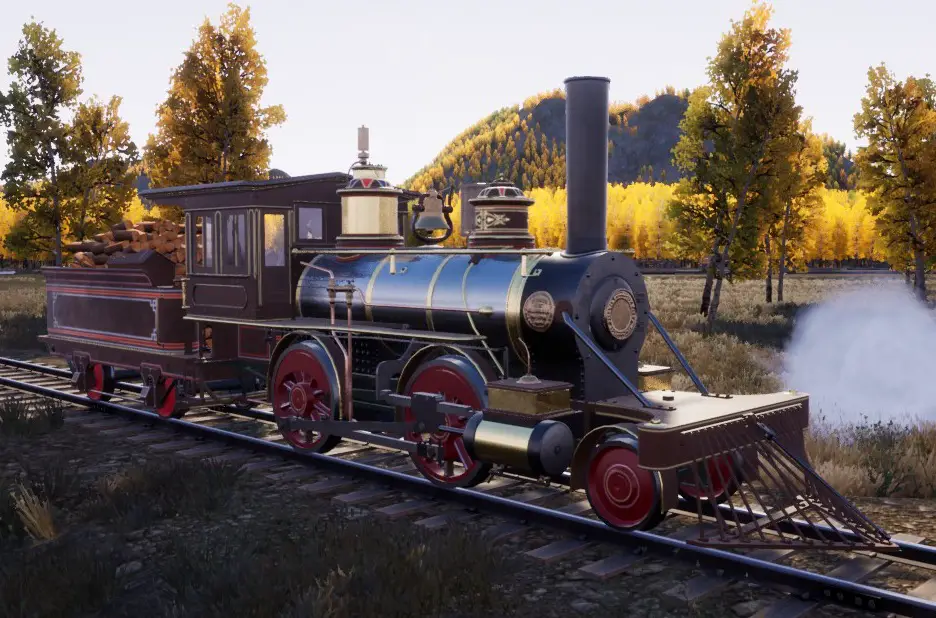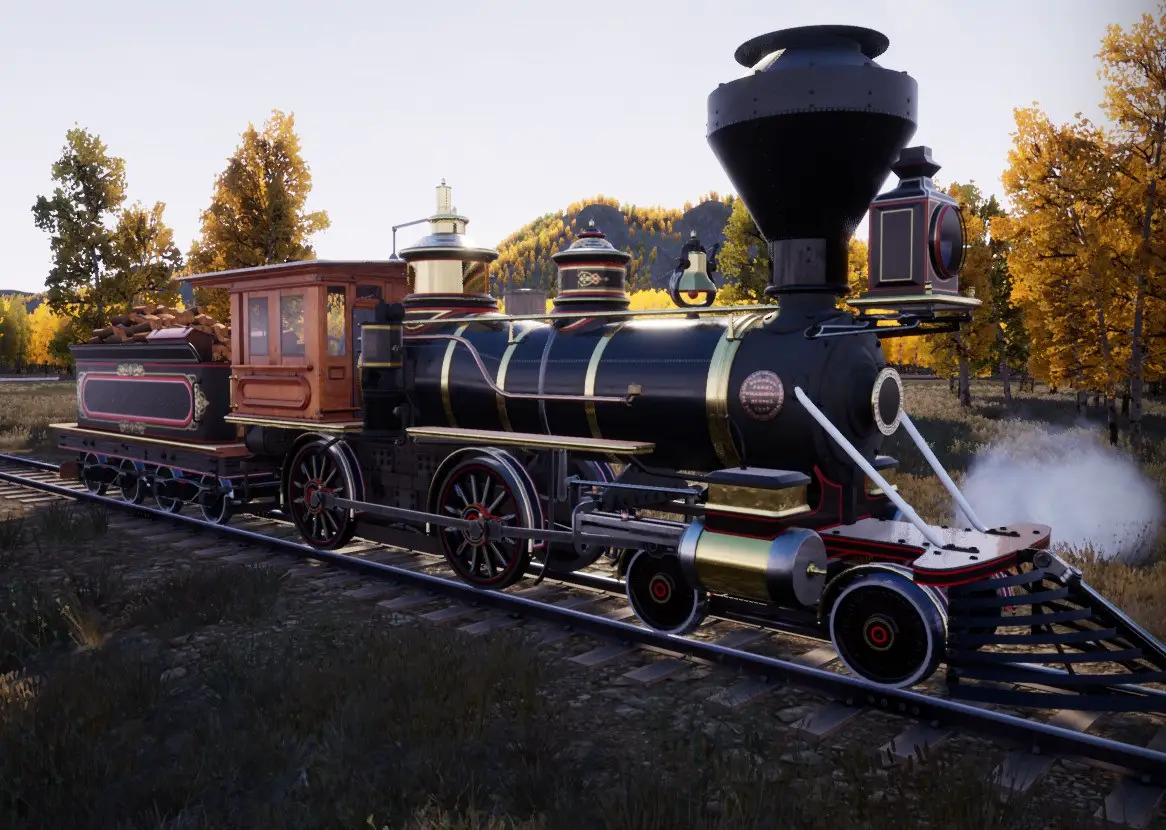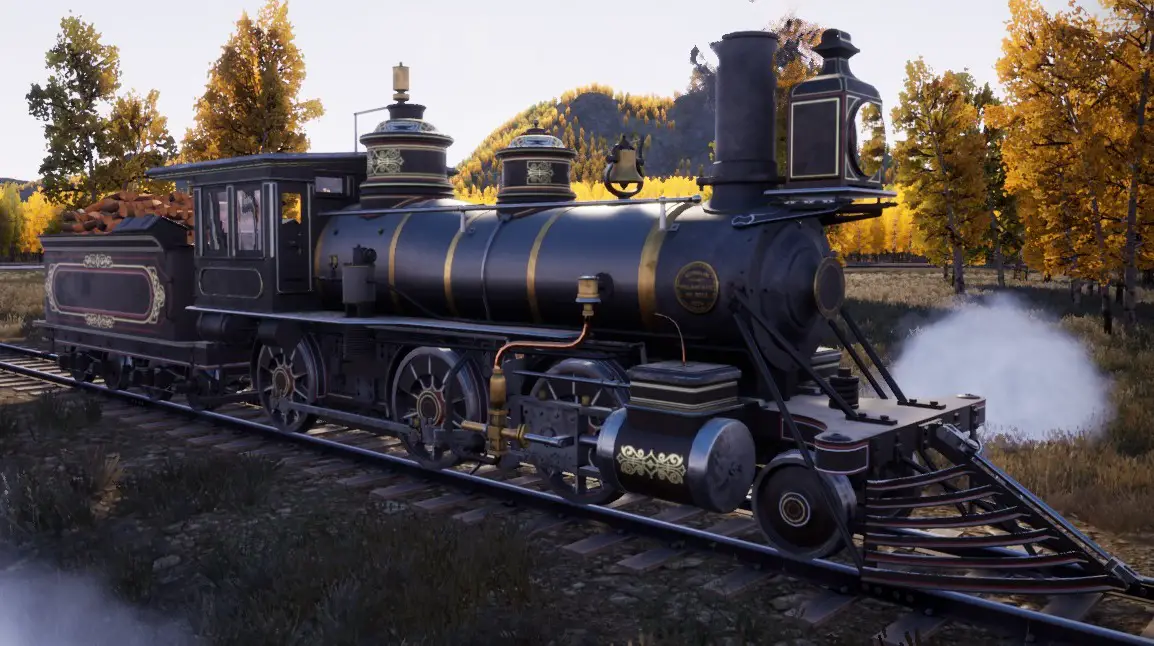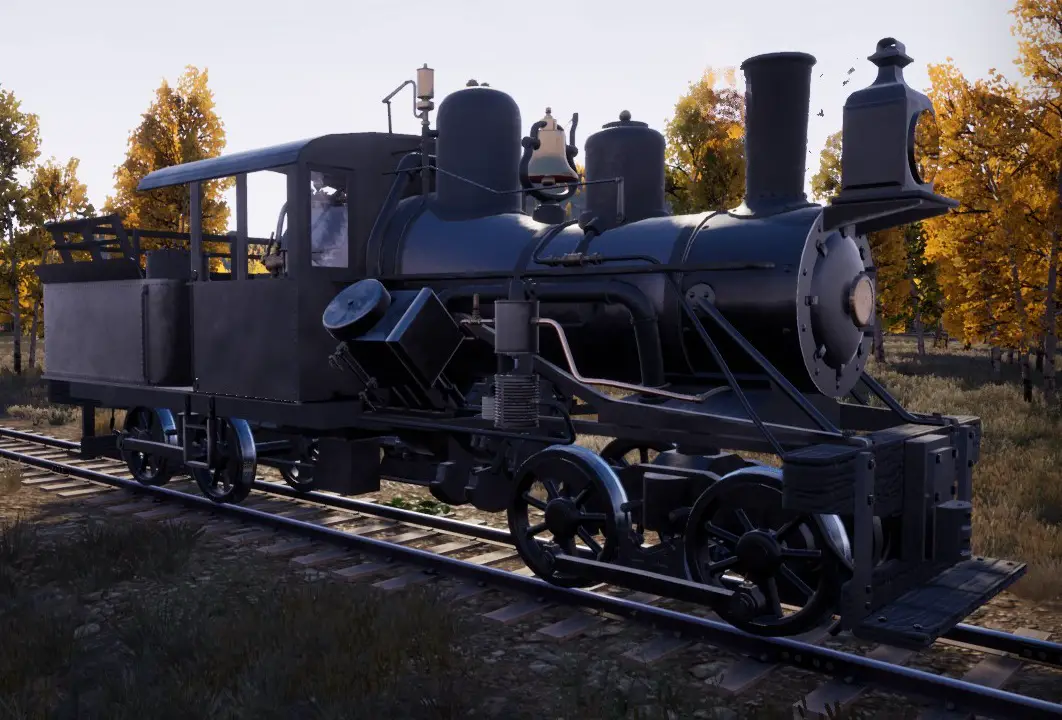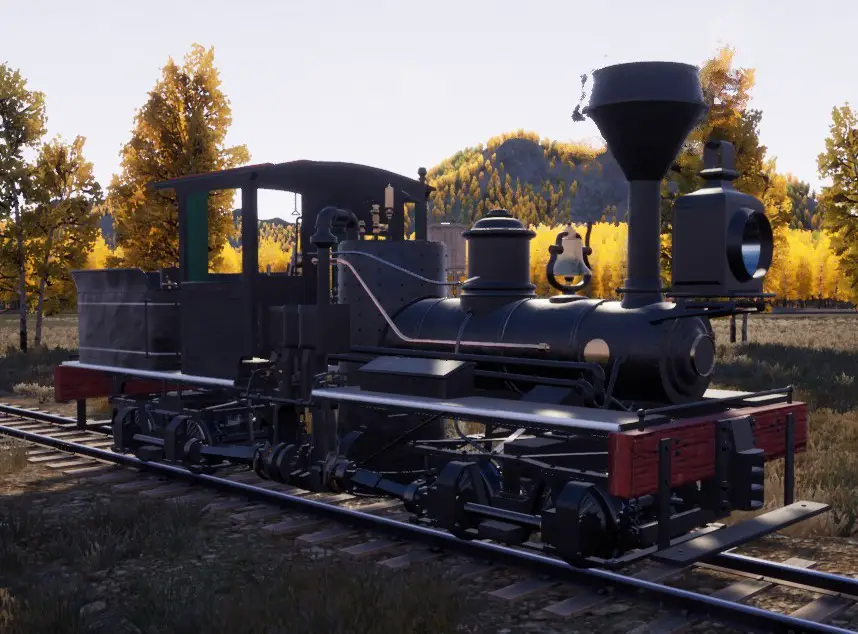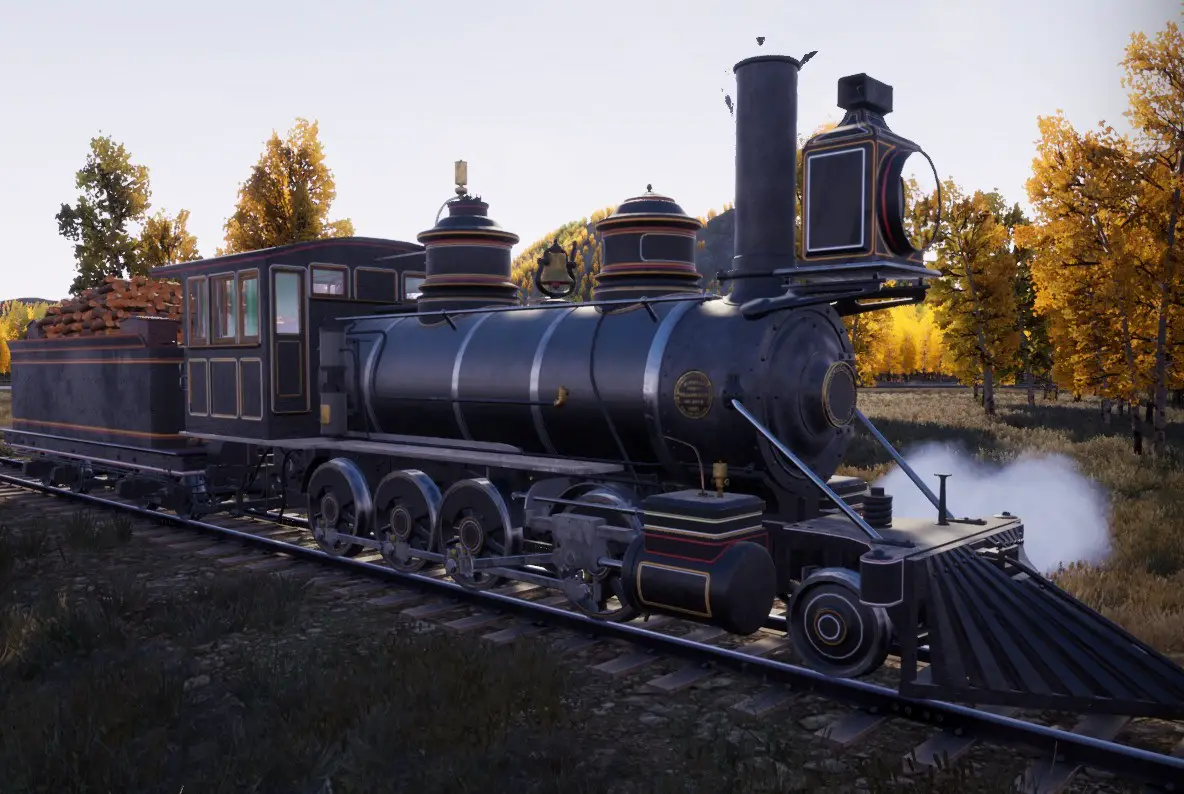This guide give the general characteristics of all locomotives currently in Rail Roads Online
Driving interface explanation
The UI for Railroads Online isn’t the cleanest, but all the controls we need to drive our engines are present.
Boiler Pressure: You don’t need to worry about your boiler exploding (ainda). So dont worry about keeping your pressure within the margins, this usually maxes out between 110-150.
Air Brake Pressure: If your train has air brakes this gives you an indication of the capacity of your air brakes. Turn on the compressor to generate air brake pressure.
Water temperature: As long as its at 110 you are fine.
Water level: Your train essentially has 2 water levels. This one and the reservoir that you fill from the water tower. All that matters within the game is that you have water to create steam. Exploding boilers is not yet implemented.
Fire Temperature: try to keep this maxed out.
Combustível: The amount of fuel in the firebox. As long as this value is above 0 your fire temperature will climb or stay maxed out.
Throttle: This controls the amount of power. 0 is none and 100 is max.
Reverser: This controls the direction and efficiency. 0 is reverse and 100 is forward. The reverser also controls the efficiency with which your engine operates. Setting reverser to 100 gives you maximum torque going forward and 51 gives you maximum efficiency going forward. Setting reverser to 0 gives you maximum torque going backwards and 49 gives you maximum efficiency going backwards.
Freio: This controls the amount of INDEPENDENT brake you apply. 0 is none and 100 is max. For the discerning reader who doesn’t know what Independent means. It means that the brake only controls the braking power of the engine you are driving, not the cars. As of right now there is no train brake, or brake that is connected to all cars of the train, so if you want to apply more braking power across your train you will have to physically run down the length of the train and apply the brakes to each individual car.
Assobiar: Controls the volume of the whistle essentially. 0 is off, 100 is max.
Gerador: Not sure if this is currently implemented, but at 0 its off and 100 its on and allows you to take steam and spin a dynamo to generate electricity for accessories of your train such as the headlamp.
Compressor: This is currently implemented for some locomotives but not all. No 0 its off and 100 its on and allows you to take steam to power a compressor to compress air for air brakes.
Sino: Makes ding dong noises.
Sander: Dumps sand in front of the train wheels to give additional traction.
Cylinder c o c k s: These are currently only aesthetic, to use turn them on whenever you begin moving the locomotive, turn them off after 1-2 seconds of releasing condensation within cylinders.
Cylinder ♥♥♥♥♥ are valves that release steam condensate (água) that occurs when cylinder temperatures are significantly cooler than that of the incoming steam, typically when the locomotive begins to move. As hot steam comes in contact with a colder surface, liquid water will form which does not compress! As the pistons move up and down, damage can occur if there is too much water in the “compression area”. As soon as the cylinder temperatures rise due to the continuance of incoming steam, the amount of condensate lowers at which point the valves can be closed. Cylinder ♥♥♥♥♥ have very small openings which allow just enough water to be expelled without a drastic reduction in steam pressure, allowing the engine to continue to create power until they are closed for normal running.
About Tractive Effort
The tractive effort required to move a train consists of numerous factors, but for most applications only four need to be considered. Primeiro, a force of 2 para 5 pounds per ton of train weight is required to move on straight level track. At very slow yard speeds only 2 para 3 pounds is needed while increasing to about 5 pounds at higher speeds. This force is required to overcome bearing friction, rail deflection, minor flange contact, etc. Years ago, the initial starting requirements were much higher when cars had friction bearings. Hoje, with all roller bearing journals, this is not much of a consideration. At speeds above 30 para 40 miles per hour, air resistance becomes significant but since this depends on the aerodynamics of specific trains, it is not addressed here.
The second factor to consider is track curvature. Cars in a curve require a good deal of tractive effort because the wheels are mounted on solid axles. Thus the wheels must slip and slide through the curve because of the difference in radius of the inside and outside rails. Wheel flange contact adds additional friction.
For the cars in the curve, the tractive effort required is 0.8 pounds per ton per degree of curvature, where curvature is defined as the number of degrees the track curves per 100 pés. Degree of curvature can be calculated if the curve radius is known by dividing 5730 feet by the radius. Por exemplo, track with a 573 foot radius would have 10° of curvature. Curvature can also be directly measured by the following method: Stretch a cord or tape tight across two points on the rail which are 62 feet apart. Measure the distance from the midpoint of the cord to the rail. This distance in inches is equal to the degrees of curvature.
Good engineering practice limits maximum curvature to about 12°. No entanto, curvature may exceed 20° in an industrial yard with limited real estate, but excessive wheel and rail wear will likely result.
The percent of grade is perhaps the most important factor governing tractive effort. For every ton of train weight in a grade, 20 pounds of tractive effort is needed for each 1% of slope. (One percent of a ton or 2000 pounds equals 20 pounds.) A 1% grade is defined as a vertical increase of one foot for each 100 feet of horizontal distance. A 1% grade is considered steep; a 2% grade is unusually steep.
For the purposes of weight capacity per grade in this guide we use 5 pounds per ton of train weight * 2000 minus the weight of the locomotive for 0% grade and 5+20*percent grade per ton of train weight * 2000 minus the weight of the locomotive for all other grades.
Handcart
This is a generic handcart. It is useful for getting from point a to b without hauling any cargo.
Nível: 1
Preço Base: $150
Peso: 2,200
Tractive Effort: 112 LBf
Porteiro (Nível 1)
Common historically used for shunting and light freight.
Nível: 1
Preço Base: $2900.00
Peso: 15,965 lbs
Tractive Effort: 2,870.00 LBf
Porteiro (Nível 2)
Common historically used for shunting and light freight.This version of the porter is slightly heavier, but has a higher capacity for firewood.
Nível: 2
Preço Base: $3,200.00
Peso: 17,956 lbs
Tractive Effort: 2,870.00 LBf
D&RGW Class 48
Common historically used for shunting and light freight.
Nível: 3
Preço Base: $3,500.00
Peso: 33,000 lbs
Tractive Effort: 9,550.00 LBf
Montezuma
Also known as the D&RG Class 25
Rápido
Best used for passenger service
Nível: 2
Preço Base: $2,500.00
Peso: 33,000 lbs
Tractive Effort: 3,650.00 LBf
Eureca
Also known as the D&RG Class 38
Rápido
Best used for passenger service
Nível: 2
Preço Base: $2,900.00
Peso: 37,840 lbs
Tractive Effort: 5,620.00 LBf
Glenbrook
Historical Use – 2 built as log haulers for the Carson and Tahoe Logging and Fluming Company (C&TL&FCo.)
Nível: 2
Preço Base: $3,100.00
Peso: 37,840 lbs
Tractive Effort: 7,811.00 LBf
Clímax
Also known as Class B-28 Climax
Compared to shays are cheaper, mas 1-2 mph slower
Would commonly “shake themselves to death”
As a result of this a big part of Climax’s business was repair parts
Nível: 3
Preço Base: $5,650.00
Peso: 53,339 lbs
Tractive Effort: 17,210.00 LBf
Heisler
Also known as Class 37-8-36 “Armill” Heisler, used by West Side Lumber Co. 3
Faster than any other geared design at cost of power
Logging engine
Basically a big v twin motorcycle engine powered by steam connected to the drive shaft that drives the locomotive
Nível: 4
Preço Base: $5,650.00
Peso: 61,870 lbs
Tractive Effort: 13,010.00 LBf
Shay
Also known as Class A15-2 Shay, Used by the Michigan-California Lumber Co. 2
Geared locomotive
Lento
Common use – logging railroads
Nível: 3
Preço Base: $5,400.00
Peso: 47,960 lbs
Tractive Effort: 5,896.00 LBf
Cooke Mogul
General use- used for everything from freight to passenger trains
Nível: 5
Preço Base: $4,300.00
Peso: 58,176 lbs
Tractive Effort: 11,872.00 LBf
D&RG Class 70
General use- used for everything from freight to passenger trains
Nível: 5
Preço Base: $4,300.00
Peso: 74,104 lbs
Tractive Effort: 15,468.00 LBf
Carros
Flatcar tier 1
Base weight: 8,360 lbs
With logs: 34,815 lbs
With steel pipe: 44,074
Flatcar tier 2
Base weight: 8,800 lbs
With lumber: 26,657 lbs
With raw iron: 18654 lbs
With rail: 28,641 lbs
With beam: 18,125 lbs
Flatcar tier 3
Base weight: 9,020 lbs
With cordwood: 30,184 lbs
With oil barrels: 22,913 lbs
Hopper
Base weight: 13,200 lbs
With iron ore: 35,246 lbs
With coal: 35,246 lbs
Tanque
Base weight: 30,135 lbs
With crude oil: 56,590 lbs
Boxcar
Base weight: 17,463 lbs
With tools: 24,517 lbs
Bobber Caboose: 11,880 lbs
DSP&P Waycar: 11,000 lbs
Isso é tudo o que estamos compartilhando hoje para isso RAILROADS Online! guia. Este guia foi originalmente criado e escrito por Duke Lawrence. Caso não atualizemos este guia, você pode encontrar a atualização mais recente seguindo este link.
